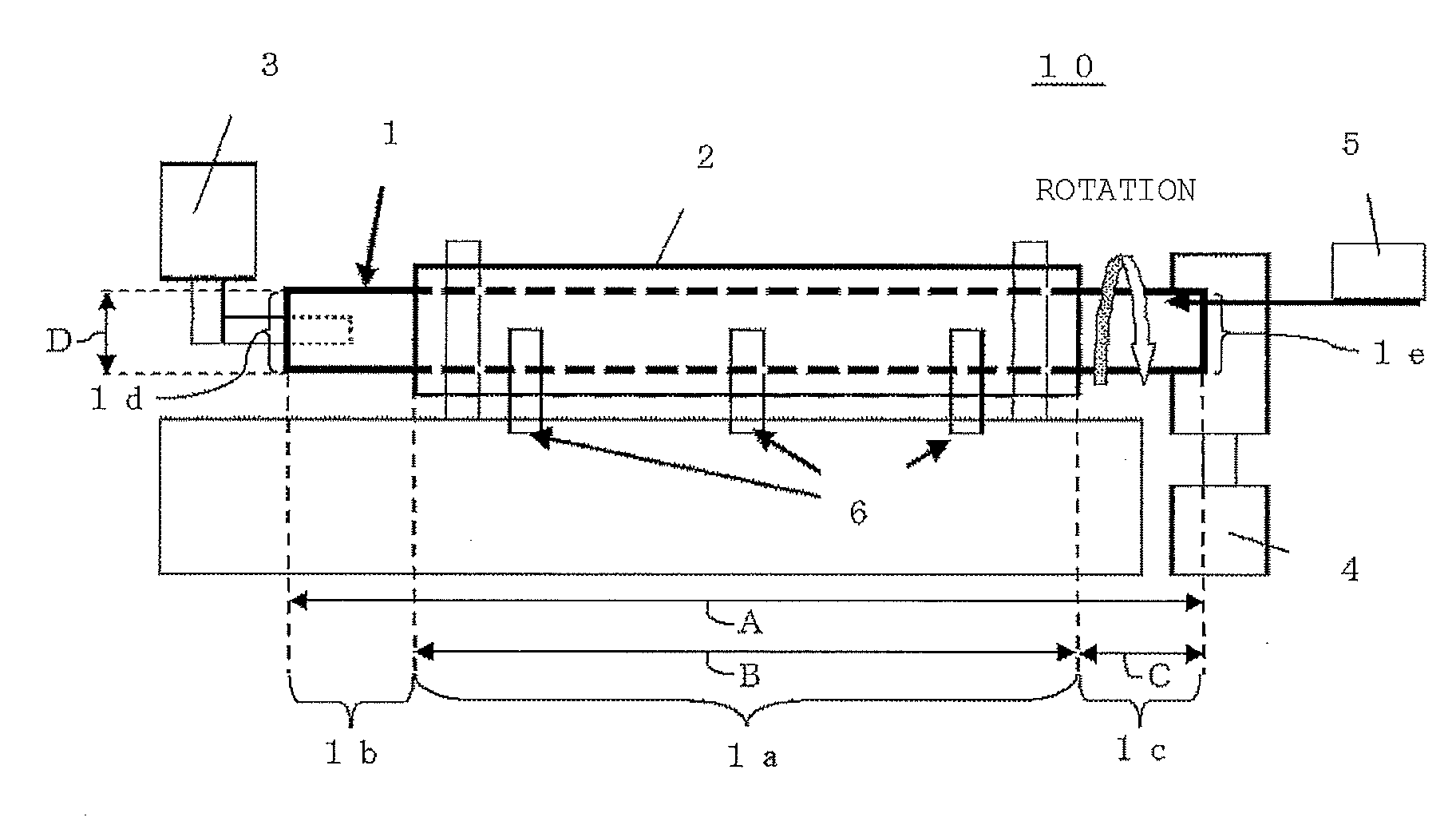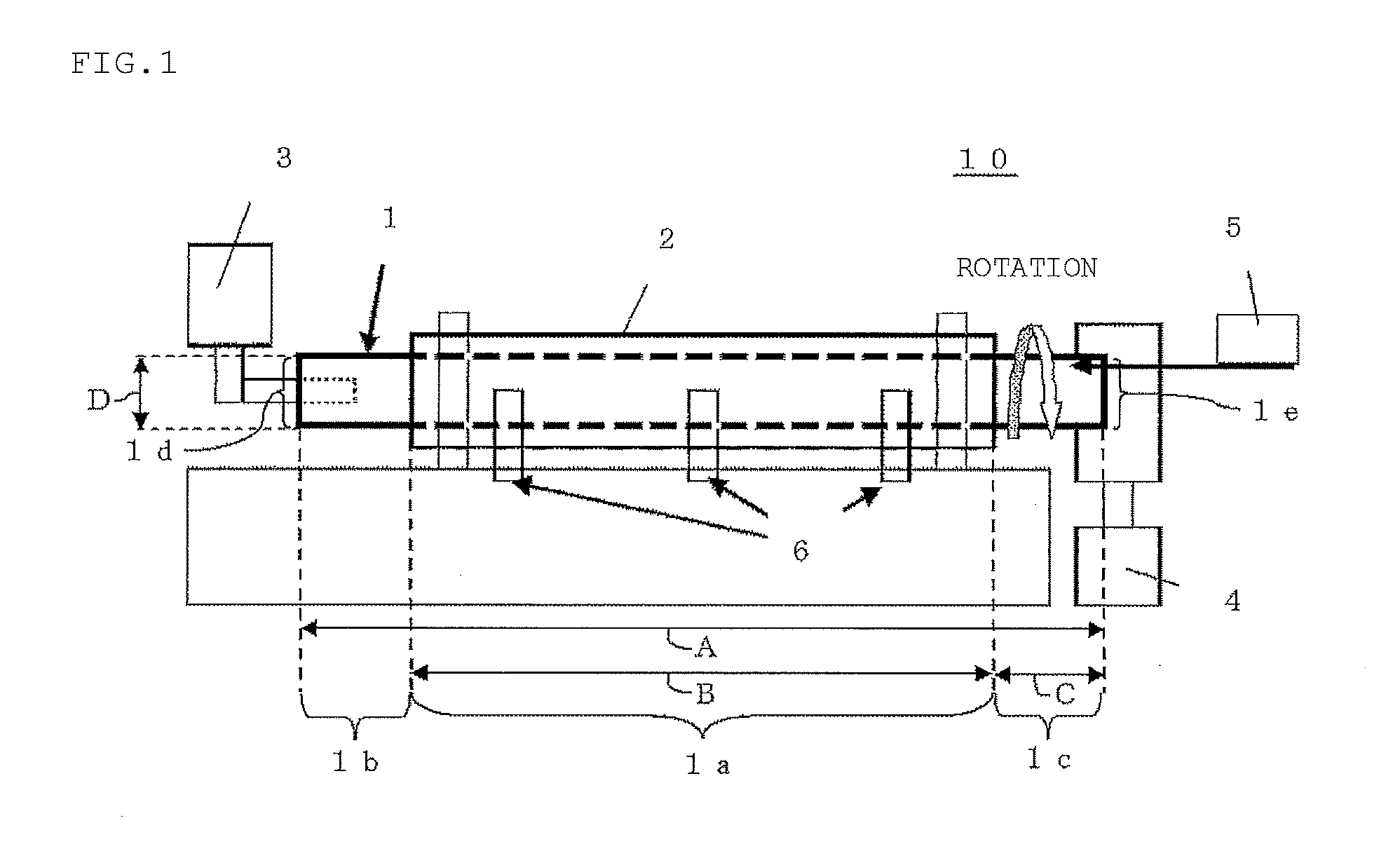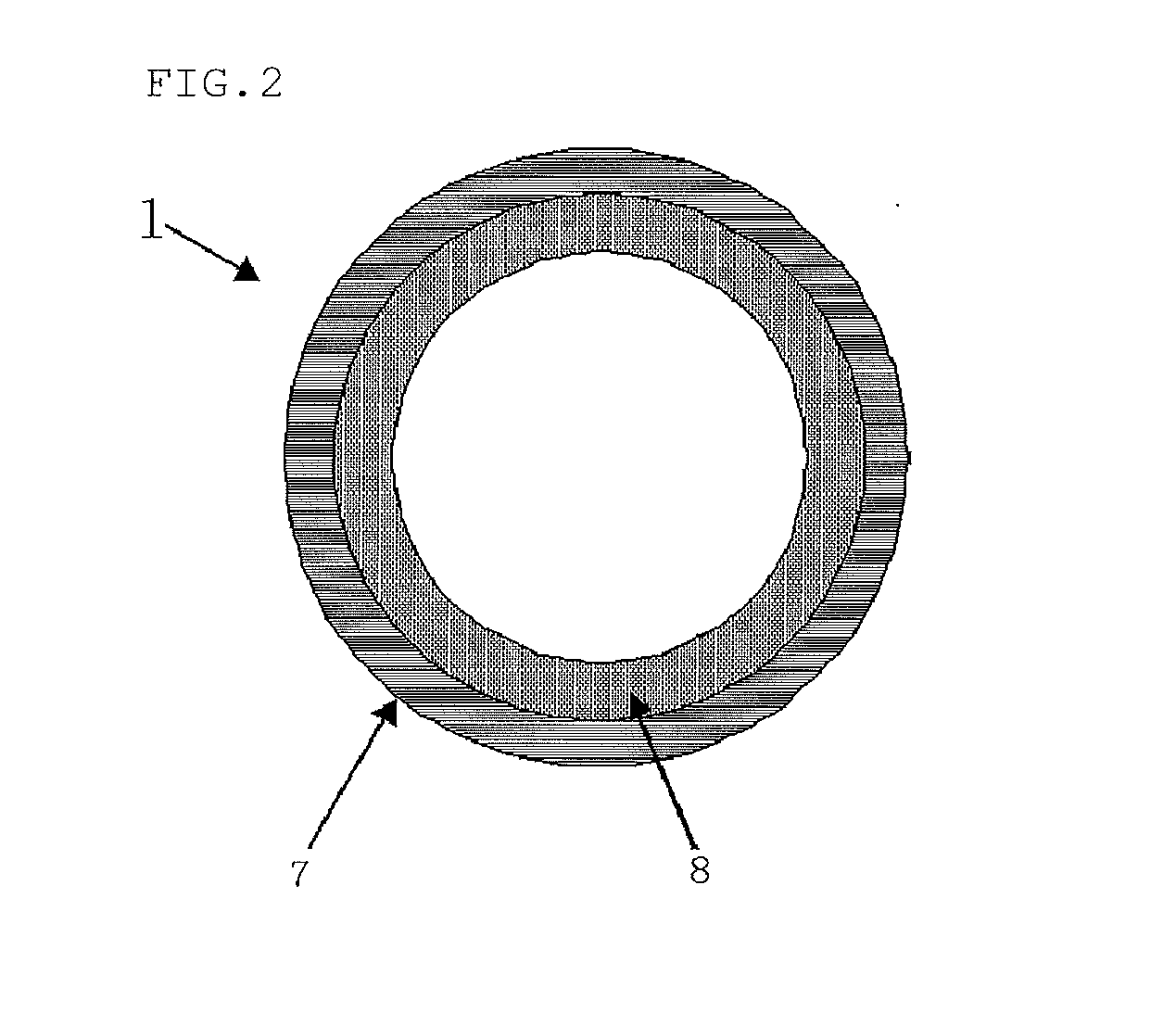Rotary tubular furnace, method of producing negative electrode active material for non-aqueous electrolyte secondary battery, negative electrode active material for non-aqueous electrolyte secondary battery, and non-aqueous electrolyte secondary battery
- Summary
- Abstract
- Description
- Claims
- Application Information
AI Technical Summary
Benefits of technology
Problems solved by technology
Method used
Image
Examples
example 1-1
[0103]A laminate film secondary battery was produced by the following procedure.
[0104]The procedure began with the production of a positive electrode. Positive electrode active materials of 95 mass parts of lithium cobalt oxide (LiCoO2), 2.5 mass parts of positive electrode conductive additive, and 2.5 mass parts of positive electrode binders of polyvinylidene fluoride (PVDF) were mixed to produce a positive electrode mixture. The positive electrode mixture was dispersed in an organic solvent of N-methyl-2-pyrrolidone (NMP) to form paste slurry. The slurry was applied to both surfaces of a positive electrode current collector with a coating apparatus having a die head and dried with a drying apparatus of hot-air type. The positive electrode current collector had a thickness of 15 μm. The resultant was finally compressed with a roll press.
[0105]A negative electrode was then produced in the following manner. A mixed raw material of metallic silicon and silicon dioxide was placed in a ...
examples 1-2 to 1-7
and Comparative Examples 1-1 and 1-2
[0115]A negative electrode active material was produced under the same conditions as example 1-1 except that the length B of the heat portion of the rotary tubular furnace was changed to change the value of B / A. The carbon coating amount and the crystallinity of the negative electrode active material, and the cycle performance and the first efficiency of the secondary battery were evaluated in the same manner as example 1-1. In these examples, the value of C / A was not changed.
[0116]Table 1 shows the summary of the results in the examples 1-1 to 1-7 and comparative examples 1-1 and 1-2.
TABLE 1Furnace: rotary kiln, C / A = 0.18, filling rate 10%, D / B = 0.11heatcarboncapacityoverallportioncoatingmaintenancefirstlength Alength Bamountstandardhalf widthcrystalliterateefficiencyTable 1(mm)(mm)B / Aclogging(mass %)deviation(°)(nm)(%)(%)comparative700010000.14very frequent2.81.022.074.07152example 1-1comparative700020000.29frequent3.71.772.014.17159example 1-...
examples 2-1 to 2-8
[0119]A negative electrode active material was produced under the same conditions as example 1-1 except that the ratio C / A of the distance C (the length of the non-heated part on the side of the outlet end of the furnace tube) between the heat portion and the outlet end of the furnace tube to the overall length A was changed as shown in Table 2. The carbon coating amount and the crystallinity of the negative electrode active material, and the cycle performance and the first efficiency of the secondary battery were evaluated in the same manner as example 1-1. The result is shown in Table 2. It is to be noted that the value of C / A was changed by changing the distance C between the heat portion and the outlet end of the furnace tube.
TABLE 2Furnace: rotary kiln, B / A = 0.64, filling rate 10%, D / B = 0.11non-heatcarboncapacityoverallportioncoatingmaintenancelength Alength Camountstandardhalf widthcrystalliteratefirst efficiencyTable 2(mm)(mm)C / Aclogging(mass %)deviation(°)size (nm)(%)(%)ex...
PUM
| Property | Measurement | Unit |
|---|---|---|
| Temperature | aaaaa | aaaaa |
| Temperature | aaaaa | aaaaa |
| Time | aaaaa | aaaaa |
Abstract
Description
Claims
Application Information
 Login to View More
Login to View More - R&D Engineer
- R&D Manager
- IP Professional
- Industry Leading Data Capabilities
- Powerful AI technology
- Patent DNA Extraction
Browse by: Latest US Patents, China's latest patents, Technical Efficacy Thesaurus, Application Domain, Technology Topic, Popular Technical Reports.
© 2024 PatSnap. All rights reserved.Legal|Privacy policy|Modern Slavery Act Transparency Statement|Sitemap|About US| Contact US: help@patsnap.com










